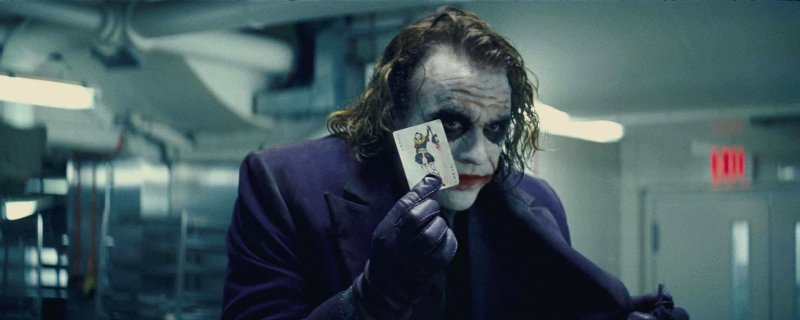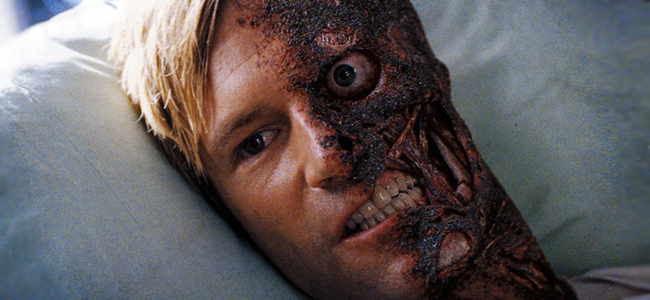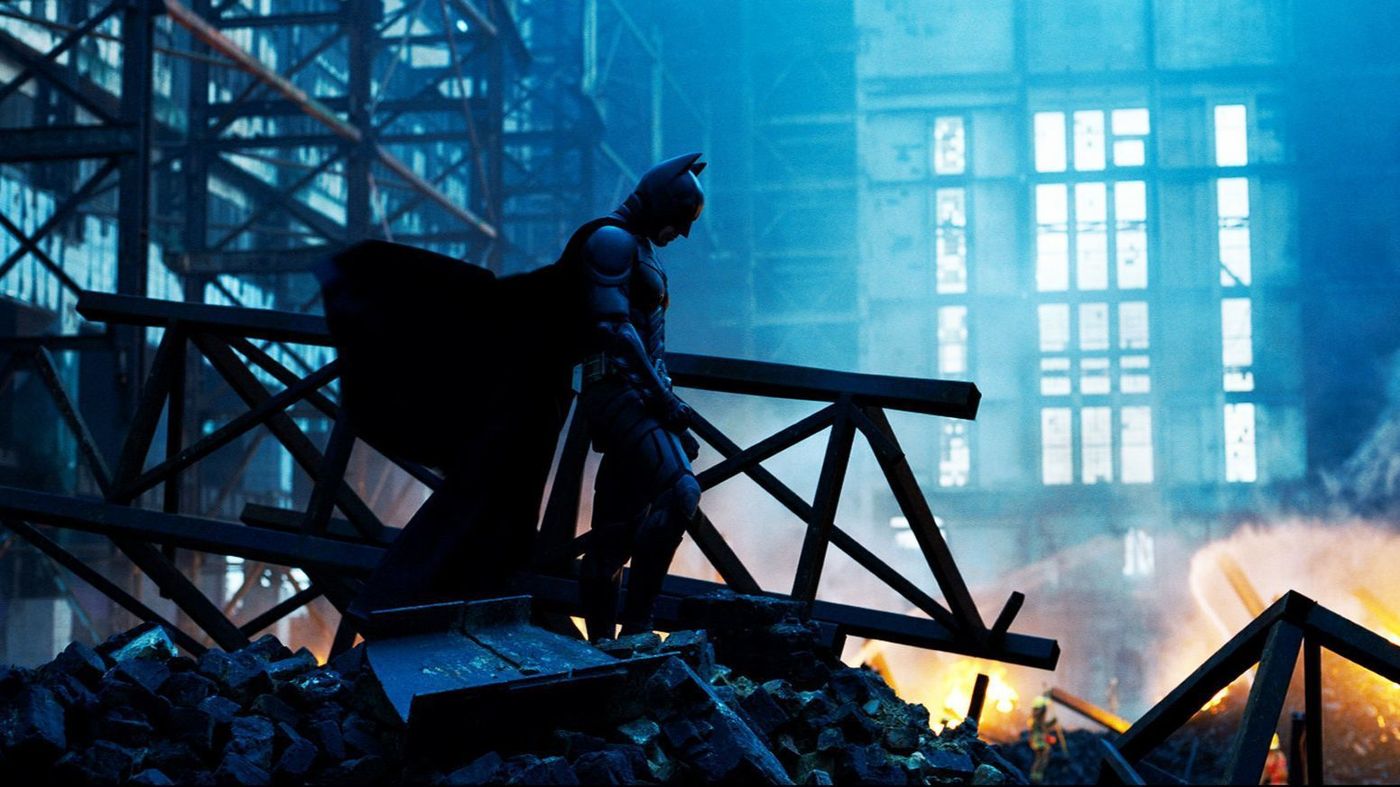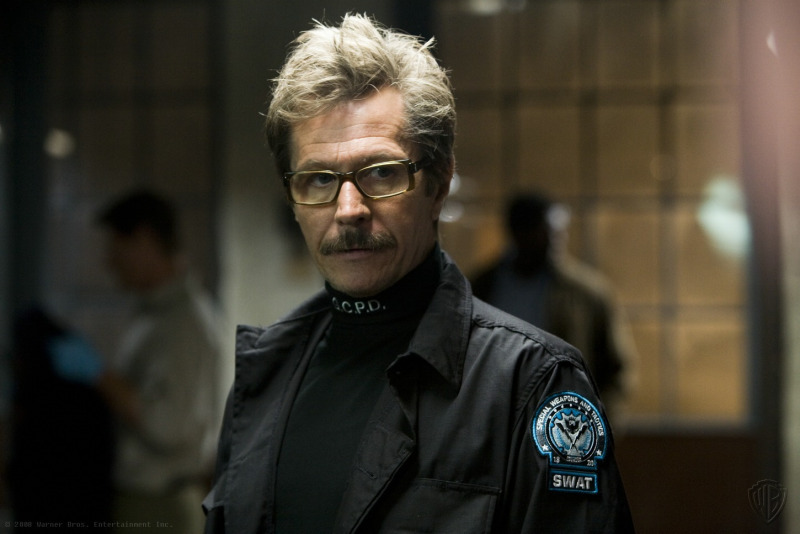Superhero movies suck most of the time. They’re usually a special brand of generic that tell paint-by-number wish fulfillment stories yet also deviate from the source material so much it actually loses a lot of the original appeal of a property. There are certainly exceptions to the previous statement, but that is the norm. That was what was expected even way back in 2008 when Christopher Nolan released his sophomore installment on the Batman franchise: The Dark Knight.
The Dark Knight obviously was much more than that. Instead of generic fantasy, Nolan opted to use the crime genre as a storytelling structure and use the superhero aesthetic and grandiose thematic elements to tell a compelling morality tale that makes or breaks our characters. Superheroes are just characters; the comic panel is not too different from a film frame. Adaptation is more than possible between the two mediums. In fact, the translation can become an artistic triumph unto itself. Basically, a comic book movie can have its cake and eat it too.
Batman Begins wasn’t too different from the norm back in the day. It was an entirely different approach from the awful Batman & Robin - where the toys produced for the film were less plastic than the performances - but it still featured an origin story and a simplistic character arc and everything you’d expect. What was nice about Batman Begins were the hints towards depth. Batman’s character is actively explored in Bruce’s relationship with Rachel and his relationship with Ra’s Al Ghul. Still, it was trapped in explaining the League of Shadows and how Gotham worked as a city. It felt good, but it was begging for a sequel to expand.
There are no ninjas in The Dark Knight.

Instead we have a rounded cast of characters that don’t need to be explored explicitly, but explored through action. This is really what makes Joker a good antagonist. Ignoring the amazing performance, ignoring the brilliant design, what’s important is the Joker’s function in the story; the Joker puts everyone’s moral philosophy through the ringer and by the end of the film we see who falls apart and who remains.
Batman Begins had a final scene that was focused on escalation. Batman as a character meant the evolution of justice, but what’s the evolution of crime? The Dark Knight immediately starts with introducing the Joker as a proper antagonist. We see his plan, we see his goons whisper about him, and we see the Joker win big at the end of it.
Then we see how Gotham has transformed since Batman has become a force for good. Criminals are scared to go out at night and everyone seems to be breathing a little easier. The predominant crime family of Gotham has fallen and now there is a power vacuum barely being held together by the Maroni crime family. A young lawyer named Harvey Dent is also a public face for justice. Harvey, Batman, and James Gordon team up to take on the rest of organized crime. This ongoing story is the major crime part of the film and it’s based on the graphic novel The Long Halloween. It’s not a direct adaptation. They took the best of the comic and dropped everything else. The Long Halloween was Two Face’s best origin story; a story that best gives the reader a sense of Batman, Gordon, and Harvey’s relationship. The ending was a cautionary tale, rather than a stupid origin about a guy obsessed with the number two.

The Maroni family is trying to hoard their remaining money together and hire the Joker to kill Batman. The second biggest comic book influence of the film is Batman #1 (1940), the Joker’s original appearance. Many of Joker’s actions are ripped right off the page, and what’s not explored in either comic or film is Joker’s backstory. We know nothing about what the Joker’s personality or background is; all we know are his motivations. This makes him scary and actively enabled Ledger to be energetic and creative. Ledger has momentum and magnetism. His color draws the eye and the audience is glued to everything he says. The Batman, in contrast, is a black hole, a solid structure as unflinching as the institutions and world he fights for.
The supporting performances also deserve to be highlighted. Caine elevated the role of Alfred beyond a support line and became the de facto parental figure. His wisdom haunts the film and guides Bruce when he’s most lost. Gyllenhall’s performance as Rachel goes beyond Holmes’s shallow girl-next-door. Rachel in this film creates a fascinating dynamic between Bruce Wayne (not Batman) and Dent. The romantic triangle isn’t really a rivalry; it’s more like a vague future both characters are married to until their illusions shatter. Oldman’s Gordon is an essential part of the franchise and is perhaps the most human aspect of the films. A workaholic father who struggles to do everything right and fails is not only a person we can relate to, but neither his morality nor his performance carry any epic tones and can be easily grasped. Gordon is what we all would try to be.
Zimmer’s score and Nolan’s editing go along with the previously mentioned concept of escalation. Tension rises constantly throughout the film. The violins feel like they’re being cut with razors until Batman explodes onto the scene with a suspenseful brass in a genre usually dominated by triumphant brass.

Looking at other Batman directors, Zak Snyder and many others would mistake tone for depth. The realistic grit of the Nolan trilogy is not why people actually like these films. The tone merely enabled the audience to take the characters seriously. The removal of camp from the Batman franchise disarmed viewers. This is not a substitute for substance. Nolan delivers on substance, directors like Snyder and Burton did not, though sometimes they made a pretty shot.
Other complex themes addressed in the film have to do with Batman and the Joker as core philosophies: fascism and anarchy. It’s hard to use the word fascist without certain historical imagery called to mind, but disregard that and instead consider Batman’s modus operandi: he believes order and peace are necessary and is achieved through violence. This applies from the bottom to the top, whether he’s punching the thug trying to steal food to punching the mob boss who owns the city. Batman as a fascist has been discussed extensively and is easiest to understand in the landmark graphic novel The Dark Knight Returns. Batman’s role as a fascist protector is put into a modern, post-9/11 context. Batman’s surveillance of the city at the end of the movie calls back to the Patriot Act and how our government compromised our liberties for the sake of security. Batman’s fascism and order is questioned and tested by the Joker’s own philosophies. The Joker thinks human nature is ultimately selfish and the trappings of social order are fallacies. This assertion that morality is relative and can buckle under pressure is the ultimate critique of fascism, or justice or society at large or whatever you see fit. The film is flexible like that.
I recall a Superman comic’s answer to the riddle “What happens when an unstoppable force meets an immovable object?” The answer is “They surrender.” The Joker does not surrender; Batman does. Batman compromises his morality with his use of surveillance, and then surrenders his ego by confessing to murders he didn’t commit. This is what it costs to win: a sacrifice of the self that ultimately justifies order and humanity.

The movie is also funny. Despite what people think, the Joker makes jokes all the time. Bruce Wayne as a public persona is funny. Both Lucius Fox and Alfred’s little quips are comedic. All of these lighter elements help with the suspense and general pacing of the film. They allow the film to breathe.
The action scenes are fantastic, too. This is also enabled by the superhero genre, which is at its best when the action utilizes the character. Batman blends into the shadows; he is brutal; he flies through the air gracefully. The motorcycle scenes give an intense feel of speed and the way the cape shapes around the back is beautiful. The film emphasizes practicality here, another reason why realism worked. Batman’s suit now enables Bale to turn his head and properly move his limbs, creating much more engaging combat than ANY Batman films before or after the use of this suit. The scenes Nolan created for IMAX also suit the average film experience. Films rarely feel this special.
So, what’s bad about the movie? Man, I don’t know. I’ve spent the last ten years of my life watching this film in awe. I can go on and on about how good it is, and the only real problem I have with it is I don’t like the dubbed line the cop gives when he arrests the Maroni gang: “Have a nice trip, see you next fall.” Amateur hour, Nolan. Two stars.

“Zack Snyder doesn’t understand the difference between depth and tone….”
Yeah, I agree. It has always been a….
“…and Batman is a fascist and the movie clearly alludes to the post 9/11 Patriot Act..”
……I think I may have misunderstood this movie.
Anyway, this movie does have flaws, particularly in parts where the movie tries to tell it’s philosophical tensions; the dialogues tries to exemplify these traits with a dull sledgehammer, making various scenes way too long because the character’s dialogues are about 3 times longer than they need to be.
This was also an issue with Nolan’s Interstellar. A better writer or director or whatever could have made the same exact movie, without cutting or losing any scenes, and be about half its running time.
LikeLike